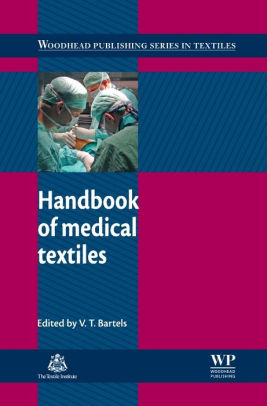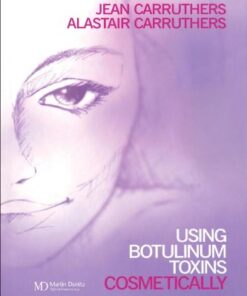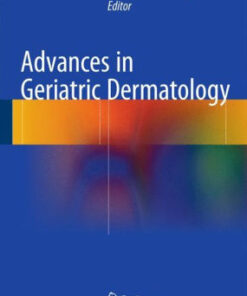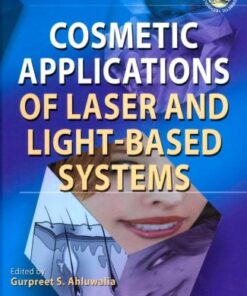(PDF) Handbook of Medical Textiles by V. T. Bartels
$38.00
Download instantly Handbook of Medical Textiles by V. T. Bartels. It is ebook in PDF format.
ISBN-10: 1845696913 ISBN-13: 9781845696917
Preview
This is the PDF eBook version for Handbook of Medical Textiles by V. T. Bartels
Table of Contents
PART 1 TYPES AND PROPERTIES OF MEDICAL TEXTILES
Modern textiles and biomaterials for healthcare, S Petrulyte and D Petrulis, Kaunas University of Technology, Lithuania. Introduction; The role of textile structures and biomaterials in healthcare; Types of textiles and biomaterials for medical applications; Key properties of medical textile products; Contacting behaviour and transmission phenomena of medical-based textiles; Engineering stability and compactness in medical textile systems; Advanced examples of research and product development; Future of medical textiles and products; Sources of further information and advice; References.
Hi-tech textiles for interactive wound therapies, S Rajendran and S C Anand, University of Bolton, UK. Introduction; Wounds; Wound dressings; Venous leg ulcers and their treatment; Wound dressing structures; Conclusions; References.
Reusable medical textiles, H M Zins, Howard M Zins Associates LLC, USA. Introduction; The role of reuseable medical textiles: a historical perspective; Advantages of reusable textiles; Types of reusable textiles used for medical applications; Processing procedures; Healthcare costs; Future trends; Conclusions; References.
Nonwoven materials and technologies for medical applications, J R Ajmeri and C Joshi Ajmeri, Sarvajanik College of Engineering and Technology, India. Introduction; Key issues of nonwovens; Main types of nonwovens and technologies for medical applications; Strengths and limitations of nonwoven materials (NMs) for medical applications; Applications of nonwovens in medicine; Future trends; Sources of further information and advice; References.
Textiles for implants and regenerative medicine, M Doser and H Planck, German Institutes for Textile and Fiber Research Denkendorf (DITF), Germany. Introduction; Textiles as implants; Textiles for regenerative medicine; Testing of implants and materials for regenerative medicine; Sources of further information; References.
Textiles with cosmetic effects, R Mathis and A Mehling, Cognis GmbH, Germany. Introduction; Application and release technologies; Functionalities of cosmetotextiles and performance testing; Safety evaluation and other regulatory aspects; Future trends; References.
Drug-releasing textiles, U S Toti, S G Kumbar and C T Laurencin, University of Connecticut Health Center and R Mathew and D Balasubramaniam, University of Connecticut, USA. Introduction; Classification of drug-releasing textiles; Fabrication and characterization; Applications of drug-releasing textiles; Conclusions; Future trends; Acknowledgements; Sources of further information and advice; References.
Medical textiles and thermal comfort, G Song, University of Alberta, Canada, W Cao, California State University, Northridge and R M Cloud, Baylor University, USA. Fundamentals of thermal comfort; Healthcare workers and patients in the hospital environment; Thermal comfort of medical textiles: surgical gowns; Evaluation and testing of thermal properties for medical textiles; Future trends; Sources of further information and advice; References.
PART 2 TEXTILES AND THE SKIN
Contact sensations of medical textiles on the skin, V T Bartels, Bartels Scientific Consulting GmbH, Germany. Introduction; Skin contact sensations; Textile properties influencing skin contact sensations; Examples of applications; Future trends; Conclusions; Sources of further information; Acknowledgement; References.
Mechanical skin irritations due to textiles, U Wollina, Academic Teaching Hospital Dresden-Friedrichstadt, Germany. Introduction; Human skin; Skin irritation; Skin responses to mechanical forces; Measurement of irritating mechanical factors; Factors causing a textile to be mechanically irritating; Conclusions and future trends; References.
Allergies caused by textiles, R Weckmann, Dr Rainer Weckmann Textile Consulting, Germany. Introduction; Types of allergies; Main types of allergies caused by textiles; Ways to minimise or avoid allergies caused by textiles; Testing for allergy-causing substances; Medical textile applications; Sources of further information and advice; References.
Biofunctional textiles based on cellulose and their approaches for therapy and prevention of atopic eczema, U-C Hipler and C Wiegand, Friedrich Schiller University of Jena, Germany. Introduction; The role of microbial infections in atopic dermatitis; Skin barrier function and increased sensitivity to irritants; Lyocell fibers for antimicrobial therapy; SeaCell® textiles for antimicrobial therapy; Future trends and conclusions; References.
PART 3 TEXTILES FOR HYGIENE
Infection prevention and control and the role of medical textiles, R James, University of Nottingham, UK. Introduction; Superbugs and healthcare-associated infections (HAIs); Principles and practice of infection prevention and control in hospitals; The role of textiles in infection prevention and control; Future challenges; A holistic approach to preventing infections; Sources of further information; References.
Absorbent products for personal health care and hygiene, F Wiesemann and R Adam, Procter & Gamble Service GmbH, Germany. Introduction; Different types of absorbent products for personal health and hygiene; Key issues of absorbent hygiene products; Testing of absorbent hygiene products; Application example: diapers – adapting products from premature babies to toilet training; Future trends; Sources of further information and advice; Acknowledgements; References.
Bio-functional textiles, S Liu, University of Manitoba, Canada and G Sun, University of California, Davis, USA. Introduction; Types of bio-functional textiles; Evaluation of bio-functional effects and safety; Applications of bio-functional textiles; Manufacturing of bio-functional textiles; Future trends; Sources of further information; References.
Hospital laundries and their role in medical textiles, J Beringer and J Kurz, Hohenstein Institutes, Germany. Introduction; Key issues of hospital laundries; Impact of hospital laundries on the hygiene of medical textiles; Testing and quality control of hygienic properties in hospital laundries; State of the art in hospital laundries; Future trends; Sources of further information and advice; References; Appendix: additional information
Odour control of medical textiles, R H McQueen, University of Alberta, Canada. Introduction; Measurement of odour; Key issues of odour control in medical applications; Control of odour with textiles; Future trends; Acknowledgement; References.
PART 4 MEDICAL TEXTILE CASE STUDIES AND APPLICATIONS
Textiles for medical filters, W Zhong, University of Manitoba, Canada. Introduction; Key issues of medical filters; Application of hollow fiber bioreactors; Evaluation and characterization of medical filters; Future trends; References.
Textiles for patient heat preservation during operations, U Möhring, D Schwabe and S Hanus, Textile Research Institute Thuringia-Vogtland, Germany. Key issues and importance of preventing cold stress to patients during operations; Main types of textiles used to maintain patient temperature during operations; Applications of textiles in maintaining patient temperature; Future trends; Sources of further information and advice; References.
Evaluation of occupational clothing for surgeons: achieving comfort and avoiding physiological stress through suitable gowns, W Nocker, Consultant, Germany. Historical background; Surgical gowns; Influences on wear properties; Elements of comfort; Evaluation of parameters relevant for comfortable textiles; Sweating as an effect of physiological stress; Controlled wear tests; Purchasing criteria; Conclusions and recommendations; References.
Occupational clothing for nurses: combining improved comfort with economic efficiency, M Walz, Eschler Textil GmbH, Germany. Introduction; Materials and methods; Cleanliness; Improving comfort in nurses’ occupational clothing; Improving durability of nurses’ clothing in industrial laundering processes; Possible savings in resources, washing and drying, durability and nosocomial infections; Applications of knitted microfiber fabrics; Future trends; Sources of further information and advice; Acknowledgement; References.
Medical bandages and stockings with enhanced patient acceptance, C Rotsch, H Oschatz, D Schwabe, M Weiser and U Möhring, Textile Research Institute Thuringia-Vogtland, Germany. Introduction; Key issues and the role of medical bandages and stockings; Improving patient acceptance of medical bandages and stockings; Conclusions; References.
Superabsorbents and their medical applications, G Bartkowiak, Central Institute for Labour Protection and I Frydrych, Central Institute for Labour Protection, Poland and Technical University of Lodz, Poland. Introduction; Methods of obtaining superabsorbent polymers and their chemical structure; Forms of superabsorbents and their properties; Development stages of superabsorbent materials according to appropriate patents; Applications of superabsorbents in medicine; Applications of superabsorbents in hygiene products and medical textiles; Applications of superabsorbents for comfort improvement; Ergonomic tests; Application of superabsorbent materials in half masks; Conclusions; References.
Nanofibrous textiles in medical applications, L Van der Schueren and K De Clerck, Ghent University, Belgium. Introduction; Nanofibrous textiles; Applications of nanofibres in the medical field; Future trends; Sources of further information and advice; References.
Dr Volkmar T. Bartels is the founder and managing director of Bartels Scientific Consulting GmbH.




